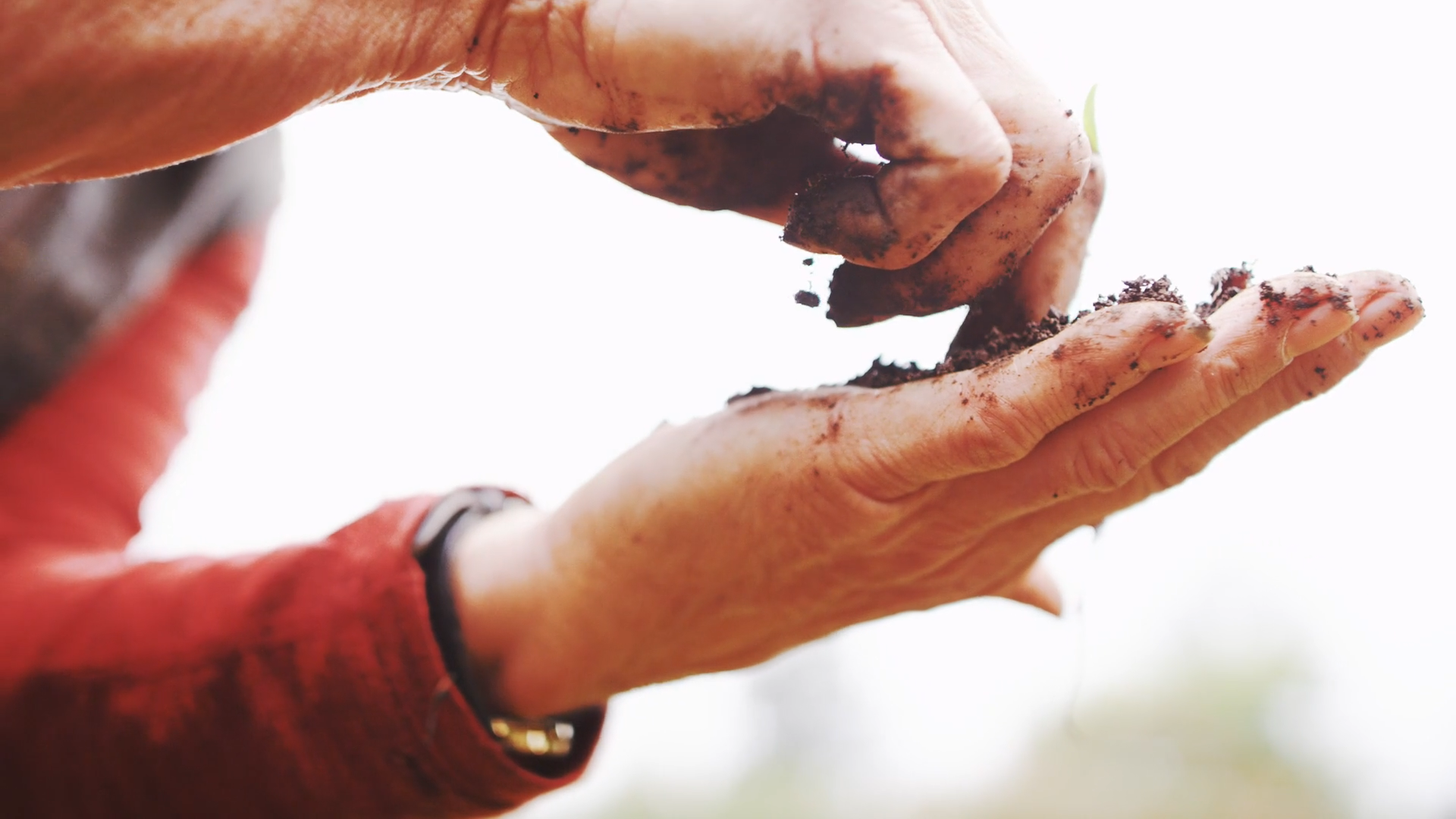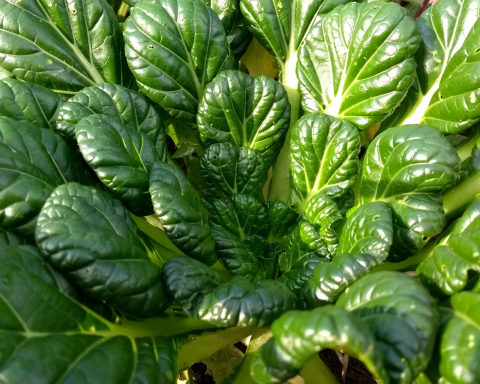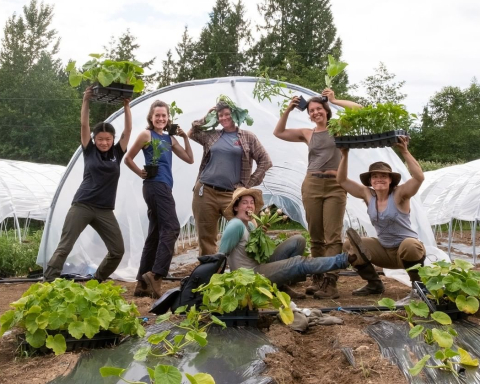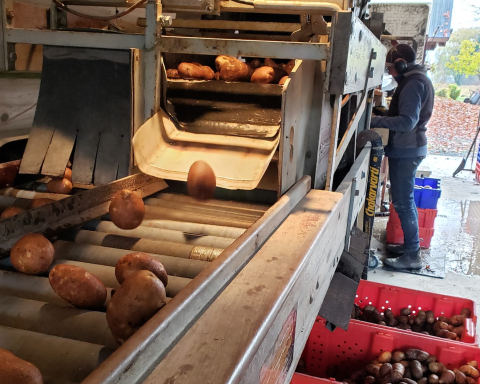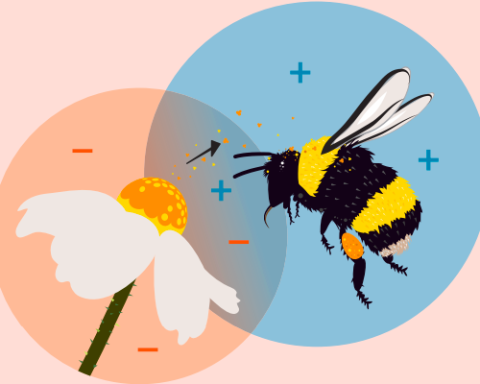By Anna Helmer
Well, I am thrilled to discover that the likely theme for this edition of BC Organic Grower magazine is: Composting Chaos. The suggestion that chaos may be composted is encouraging and practical…and it is always a treat to find something compostable that is in such good supply. Further thrills at the possibility of extending the concept to include the composting of lived experiences, especially those whose silver lining is perceived to be absent, invisible, or inadequate. The composting metaphor is very supportive: just stash it all in a heap until a more palatable, useful, and frankly understandable state is revealed.
I am obviously over-thrilled, and I will now tone it down. Composting takes ages, of course. These things don’t happen overnight.
I am certainly not over-thrilled at what I feel was a weak performance this year on the farm, biodynamically speaking. I didn’t accomplish very much of what I set out to do. I had grand plans to make some preparations, attend more zoom lectures, plant the garden according to the Celestial Planting Calendar, and generally advance myself towards being thought of as a wise, middle-aged, biodynamic farmer.
In fact, I didn’t do any of that, and I even took steps backwards. Not in ageing, unfortunately. Still relentlessly marching along that path, sorry to say.
The season started with a good old case of undermining myself: I did not apply BD 500 to the carrot field even though I have always known that a good carrot crop is conditional upon a spring application of BD 500. Other factors contribute of course: a June 1 planting date, into moist soil prepared just so; the crop to be hand-weeded twice, mechanically weeded thrice; judiciously watered but not wantonly; and harvest commencing no earlier than the third Monday in August. All that and very little more often guarantees a successful carrot crop in terms of yield, storability, and most importantly taste.
Early in the spring I improperly mixed BD 500 using assorted batches of stale-dated preparation—just to get rid of the clutter, really. I applied it within flinging distance of the barrel in a non-intentional manner. I didn’t go anywhere near the carrot-field-to-be, assuming I could be relied upon to complete the task closer to the planting date, at a more propitious time indicated by the calendar, and with something a little fresher and properly prepared. I did not do that.
I thought for sure the carrot crop was doomed but that was just the beginning. We proceeded to somehow insert change into just about every other aspect of successful Helmer carrot cropping procedure. Planting dates, seeder set-up, spacing, cultivation plan, mechanical weeding plan, and watering schedule: it was carrot chaos, really.
Jumping to the end of what has become a boring carrot story, we got a big crop of great-tasting carrots that seems to be storing well. It is an absolute mystery of variables, and I must kick myself for failing to properly apply BD 500 because now that doesn’t get to be part of the success calculus.
Hence, I am extra keen to flatter myself that the cull potato compost pile, carefully finished with some lovely compost preparations from our friends at the Biodynamic Association of BC, is quite gloriously successful. In terms of structure and appearance it does indeed look promising: it looks like a heap of rich dark soil and there are no longer potatoes visible.
It did not look at all promising to begin with, and although it reached temperature twice, I think that just encouraged the potatoes to grow more, seeing as they were nice and warm. With great gobs of them merrily sprouting and creating new potatoes it all seemed a bit futile.
My final move was to mix it, pile it nicely, cover it with hay, and apply the compost preparations. Since then, it has been through a heat dome and three heat waves, then three months of solid rain. It sits perched on a bit of high ground in a flooded field. It has basically been abandoned.
The current plan, then, is to ignore it till next spring. I’ll open it up for a look and decide if it is ready for that most stern test of quality: application to soil. Expectations are managed.
In the meantime, I am building the next cull potato compost pile, adding a few hundred pounds every other week or so as we wash and sort the crop. It looks like more culls than last year. There are whacks of maple and birch leaves layered in, and hay. I’d like to get some seaweed, next time I am at the seashore, and I am considering drenching it from time to time with BD 500, the Biodynamic gateway drug of which I’ve got extra.
My biodynamic journey chugs along, I suppose, although I am refraining from setting biodynamic goals for next season. I am still far too busy composting the last one.
Anna Helmer farms with her family in Pemberton, BC where the current mission is finding the right winter work gloves.
Feature image: Compost in hand. Credit: Thomas Buchan.


